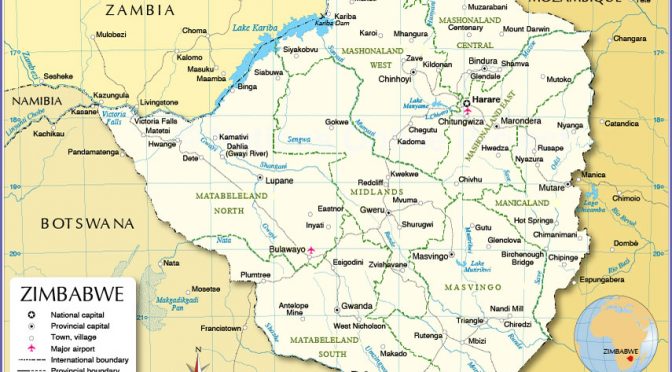Zimbabwe’s electricity generation sector grapples with ageing infrastructure, environmental challenges, and a lagging renewable energy transition, according to a pro-environmental platform Clean Technica.
With an installed capacity of nearly 3,000 MW, the Zimbabwe Power Company (ZPC) faces significant hurdles, including unreliable thermal plants, water shortages for hydropower, and a sluggish independent power producer (IPP) sector.
ZPC’s main thermal plants, particularly the six coal-fired units at Hwange with a combined capacity of 920 MW, are plagued by frequent breakdowns. Rehabilitation efforts are ongoing to restore these units to full capacity and add new ones, with plans for units 9 and 10. However, smaller coal plants in Harare, Munyati, and Bulawayo, each capable of generating around 80 MW, have been decommissioned as they are no longer economically viable to operate.
Hwange recently received a boost by commissioning two new coal-fired units (units 7 and 8) that added 600 MW to the grid, providing much-needed relief amid Zimbabwe’s chronic power shortages.
Meanwhile, the Kariba Dam hydropower station, traditionally a reliable contributor with a 1,050 MW capacity, is currently generating just 100 MW due to low water levels caused by recurrent droughts. This is the third time in five years that low rainfall has severely impacted the plant’s output, underscoring the growing threat of climate change to the region’s energy security.

Zimbabwe has issued over 100 licenses for renewable energy projects, including solar and wind, yet less than 4% of the country’s electricity is currently generated by IPPs. Financial uncertainty, driven by Zimbabwe’s volatile currency and inflationary pressures over the past two decades, has hindered progress. Developers have struggled to secure financing, particularly for long-term power purchase agreements (PPAs), with a landmark court case recently reinforcing the challenges of operating in Zimbabwe’s currency environment.
Despite these obstacles, Zimbabwe’s utility-scale solar sector is showing signs of momentum. Centragrid recently completed a 25 MW solar power plant in Nyabira, about 35 km outside Harare, which now feeds electricity into the national grid. The project was financed with support from local pension funds, including NSSA, and investment firm Old Mutual, marking a significant milestone as the second-largest solar installation in the country.
The largest is Zimplats’ 35 MW solar plant near Selous, part of a larger 185 MW project estimated to cost $201 million. Phase one, costing $37 million, is operational, and phase two, a 45 MW plant, is now underway.

25 MW solar plant in Nyabira. Image courtesy of Centragrid.
Other major projects in the pipeline include a 36 MW solar plant for cement manufacturer PPC, a 100 MW solar project for ferrochrome producer Afrochine, and another 100 MW facility for the new Dinson Steel plant in Manhize. Together, these initiatives are expected to add over 450 MW of utility-scale solar capacity in the coming years.
Zimbabwe’s journey toward renewable energy has been fraught with challenges, but the recent successes in solar development offer a glimpse of hope. Stakeholders are calling for an accelerated transition to diversify the country’s energy mix, reduce dependence on ageing coal plants, and mitigate the impact of climate change-induced droughts.
While Zimbabwe’s renewable energy revolution remains in its early stages, the progress achieved by developers like Centragrid and Zimplats signals a potential turning point. As the sector continues to gain traction, the future of Zimbabwe’s energy landscape may yet shift towards a more sustainable and resilient model.
thezimbabwemail.com


